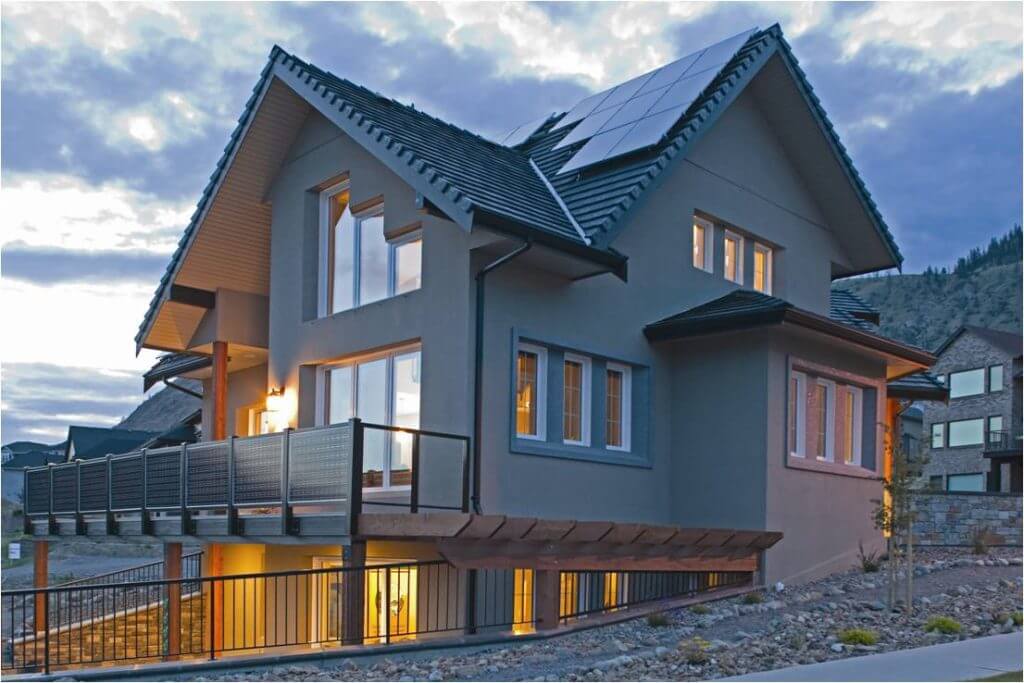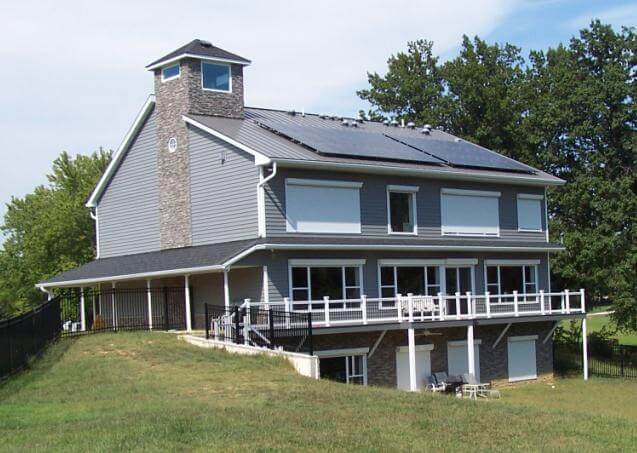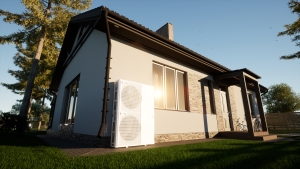Over the past 5+ years, 1,000+ Net-Zero (NZ) and Net-Zero-Ready (NZR) homes have been built in Canada under the Canadian Home Builders’ Association’s Net Zero Home Program.
And with that sample size, and with energy codes are trending toward the Net Zero Ready benchmark, it’s time to ask ourselves – what have we learned?
To assess these homes’ performance, key metrics related to these homes’ envelope and energy performance were analyzed.
Here are some key findings (all information courtesy of the Canadian Home Builders Association (CHBA)):
Energy Performance
Energy Consumption
Overall, almost all NZ and NZR homes consumed fewer than 100 Gigajoules of energy per year.
Homes with a smaller footprint (less than 6,000ft2) consumed the least energy – averaging at about 60Gj/year. Meanwhile, the larges of homes required more energy to keep the home running, averaging closer to 80Gj/year.
Such a difference is unsurprising, since a larger floor area requires a higher output from heating and cooling systems, even if the home is NZ or NZR.
Energy Consumption Improvement Over Reference House
This final energy performance statistic compares NZ homes’ energy consumption (without occupant loads) to the reference house, i.e. the code minimum.
The finding of the study reveal that a large portion of NZ detached homes saw improvements of 60%-80% over the reference house, whereas attached homes saw smaller improvements of about 40%.
Provincial Case Studies
The CHBA NZ program’s study allows us to make snapshots of how NZ and NZR ready homes “have looked” in terms of their energy use, envelope composition, space heating systems, and emissions in different provinces.
Here are the profiles of the homes built in British Columbia, Alberta and Ontario, segmented by province:
Ontario – 88% NZR, 12% NZ
The homes built in Ontario have these characteristics:
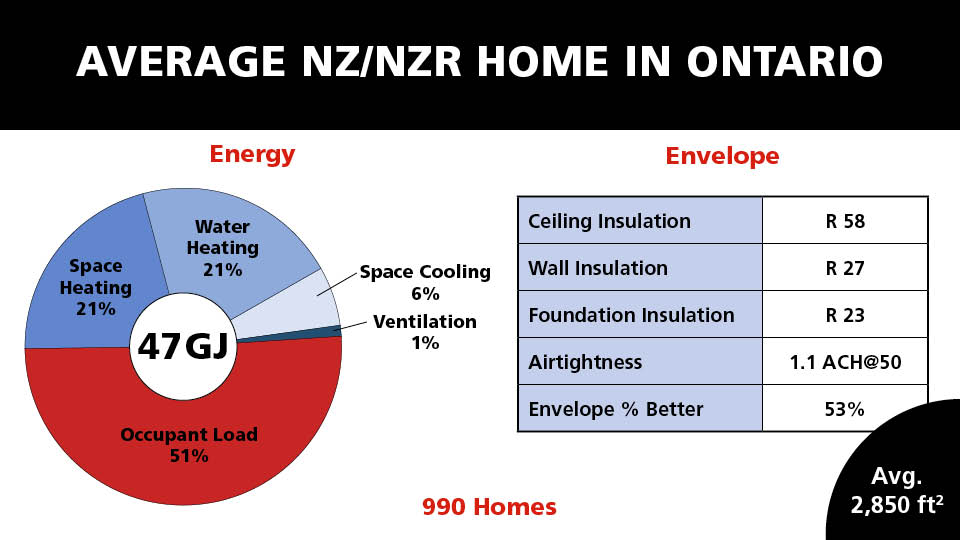
Home Systems
- Most common space heating system: Air source heat pump and gas furnace
- Most common DHW heating system: Gas
Emissions (based on “archetype” home for the province)
- Natural gas emissions: 630 KgCO2e/year
- Electric emissions: 290 KgCO2e/year
British Columbia – NZR 51%, NZ 49%
The homes built in British Columbia have these characteristics:
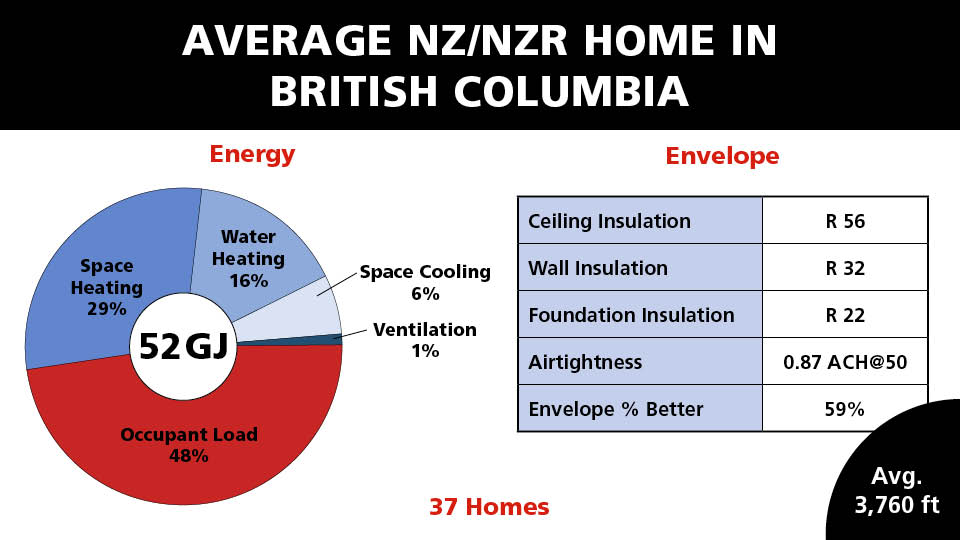
Home Systems
- Most common space heating system: Air source heat pump and electric furnace
- Most common DHW heating system: Electric domestic hot water
Emissions (based on “archetype” home for the province)
- Electric emissions: 238 KgCO2e/year
Alberta – NZR 22%, NZR 78%
The homes built in Alberta have these characteristics:
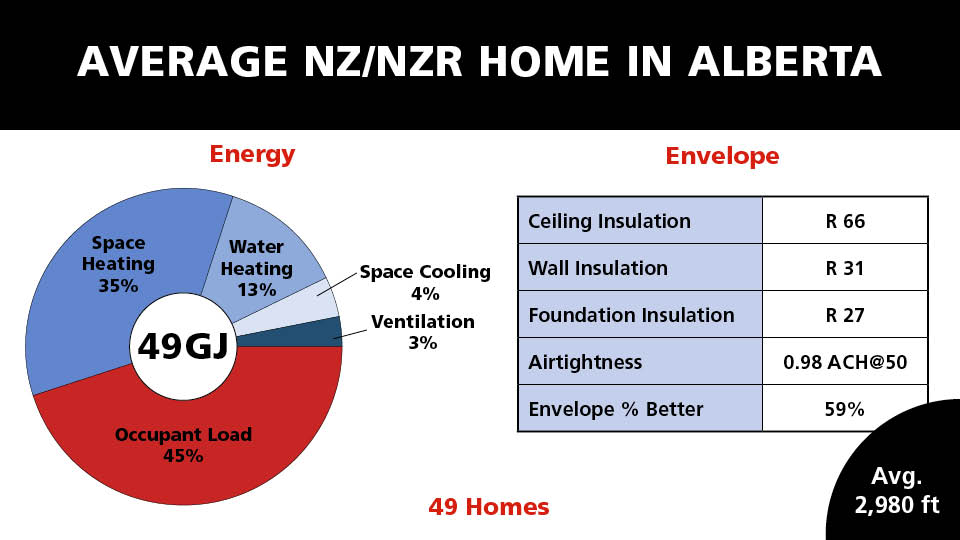
Home Systems
- Most common space heating system: Air Source Heat Pump and Electric Furnace
- Most common DHW heating system: Electric domestic hot water
Emissions (based on “archetype” home for the province)
- Electric emissions: 7,945 KgCO2e/year, but technically 0 KgCO2e/year because the archetype Albertan home is fully Net-Zero and all electric
Industry Challenges As We Move Forward
Analyzing the CHBA NZ program’s first 1,000 NZ and NZR homes produced fascinating, encouraging observations about the overall trend toward greater energy efficiency and lower emissions.
However, certain challenges do remain, as the implementation of NZ designs is not without complications. Below are the two of the most concerning issues the industry is facing as we move forward toward a net-zero future:
- Window detailing challenges: The optimal solution for window detailing in a NZ home isn’t there yet, and this is proving to be an obstacle on the way forward.
- Ventilation and airtightness balance: Airtightness is a significant contributor to energy performance, but increasing airtightness comes at a detriment to a home’s ventilation.
There needs to be a balance between airtightness and ventilation, as poorly ventilated homes have poorer indoor air quality and increased risks of Radon accumulation. “Build tight, ventilate right” is the motto, but what this balance looks like in practice is not well understood just yet.
Wrapping It Up
The CHBA’s Net-Zero home program is yielding some fascinating results now that over a thousand NZ and NZR homes have been built over the past half a decade.
We hope that our summary of these findings has given you a glimpse into what the Net Zero Home program has achieved so far and what the future may look like as Net-Zero Ready makes its way into Canadian building codes over the next decade.


